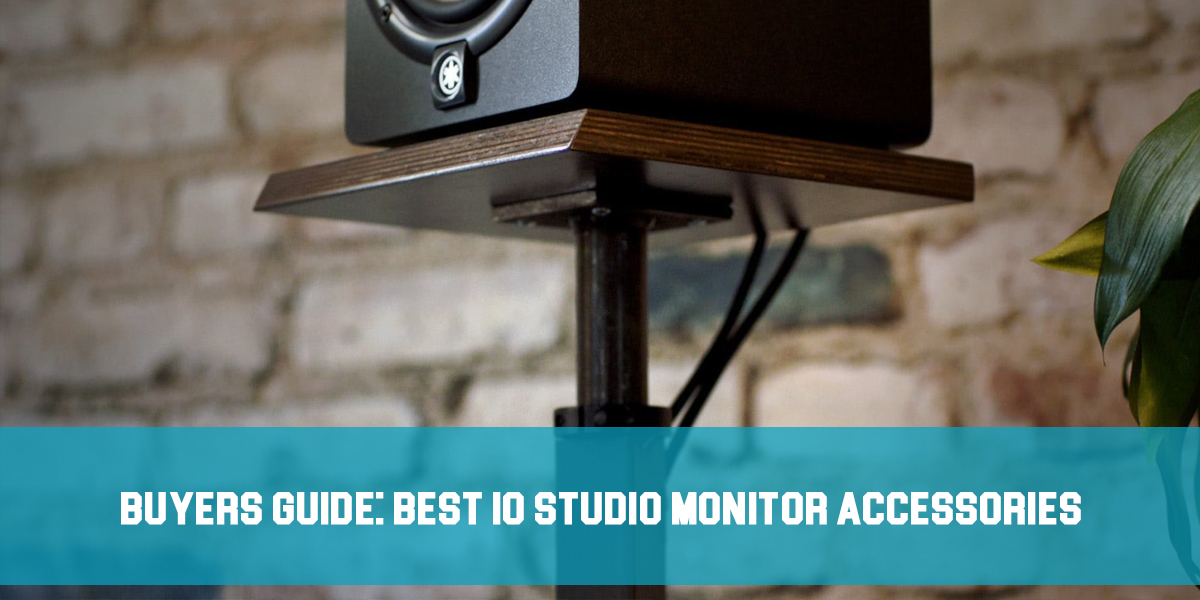Top 10 Multifunctional Dynamic Microphones
Introduction
Dynamic microphones are versatile and excellent for general-purpose use. They have a simple design with few moving parts, making them sturdy and resilient against rough handling.
They’re also better suited to handling high volume levels, such as those from certain musical instruments or amplifiers. Dynamic mics don’t have built-in amplifiers and don’t require batteries or external power.
A good dynamic microphone can be used for all kinds of recordings, from percussive snare drums and cymbals to vocals and guitar amplifiers.
Dynamic mics are a smart investment. If you tend to switch between instruments during music sessions, they’re perfect for you.
When you buy a dynamic mic, you won’t need to purchase different mics for different instruments. The versatility of dynamic microphones makes them one of the best and most sought-after products on the market. There are many brands to choose from.
Benefits and Disadvantages of Dynamic Microphones
The benefits of dynamic microphones generally outweigh their disadvantages.
Benefits:
- Dynamic mics work especially well for applications that need a warm sound, such as voiceovers.
- They don’t require an external power source, making them extremely easy to use in a wide variety of situations.
- They can handle very loud sound levels.
- They’re rugged, durable, and can withstand all kinds of rough handling.
- They’re versatile and suitable for many different uses.
- They’re water-resistant.
- They do a good job managing plosives.
- Because they have a simple design, they’re often very affordable.
Disadvantages:
- They aren’t ideal for capturing delicate or subtle sounds.
- They pick up a more limited range of high-frequency details.
- They can handle recording harmonics, but not always with the most detail.
- They generally produce less detailed sound overall.
- You’ll need to be close to the microphone’s diaphragm for a clear signal.
We’d also like to mention that we’ll list these Multifunctional Dynamic Microphones in no specific order. The list will be randomized, as we don’t want to rank them from best to worst.
Listed below are our Top 10 Multifunctional Dynamic Microphones:
1. Shure SM 7 B
The Shure SM7B is a legendary dynamic moving-coil microphone, perfect for close-up vocal and instrumental use in recording and broadcast studios. Built on decades of acoustic innovation and research, this Shure mic delivers a flat, clean frequency response in a tough, durable casing.
With its wide dynamic range and smooth, extended frequency response, the SM7B provides a polished, professional sound in almost any setting, which is why it’s so highly valued in broadcasting.
This microphone feels solid and substantial in the hand; it doesn’t seem fragile or unbalanced. Weighing just over 1.5 pounds and measuring 7 inches in circumference, the Shure SM7B requires a microphone stand with a sturdy counterweight for proper support and isn’t meant for handheld use.
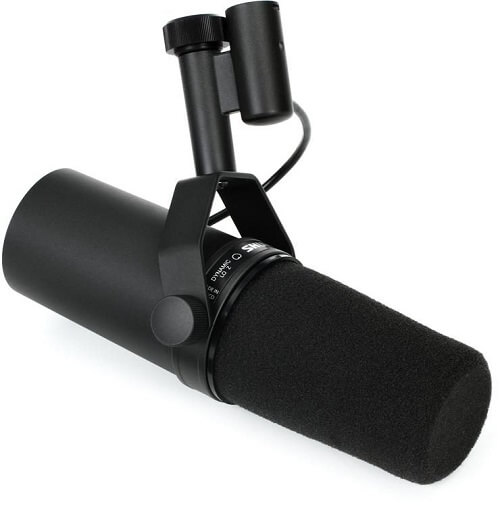
- XLR connector
- Dimensions: 190 x 64 x 96 mm
- Weight: 766 g
- Includes switch cover plate and windscreen
| For US Customers | For EU Customers | |||
|---|---|---|---|---|
Shure SM 7 B |
2. t.bone MB 7 Beta
The type designation already hints at the direction: the magical “7” is a nod to the SM7B, while the “Beta” label can be recognized from Shure. The steel housing, finished in satin black, looks classy and refined.
Like its inspiration, the t.bone MB 7 Beta comes mounted in a fork bracket and is designed to be addressed from the front. Its design is optimized for use with desk-mounted microphone arms commonly found in broadcast settings, but it can also be mounted on a standard microphone stand. The microphone has a cylindrical shape measuring 140 × 49 mm, making it about a third smaller than its larger counterpart.
Acoustically, there are some differences: The Shure SM7B has a fixed minimum lip distance because its capsule is set back 50 mm. In contrast, the t.bone MB 7 Beta’s capsule is surrounded by approximately 5 mm of foam, placed directly behind the grille. The location of the XLR output socket is also different. On the MB 7 Beta, it is recessed into the back.
On the Shure SM7B, the output socket is connected to the tripod mount via a thin cable. This helps minimize the transmission of mechanical noise and provides space on the back for two slide switches that adjust the sound by cutting bass or boosting presence. The MB 7 Beta does not include any switches.
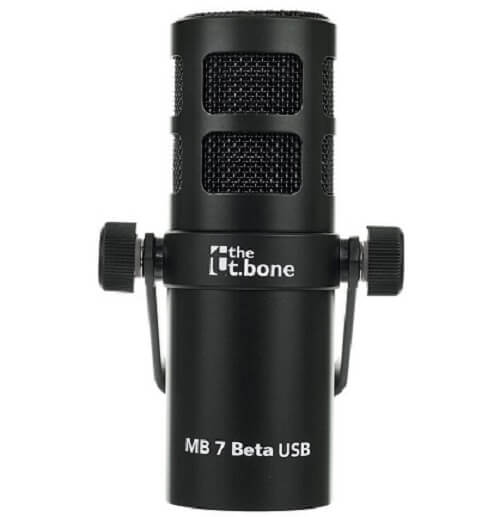
- Dimensions without bracket: diameter 50 mm X length 140 mm
- Dimensions with bracket (L x B x H): 200 x 90 x 50 mm
- Weight: 450 g
| For EU Customers | |||
|---|---|---|---|
t.bone MB 7 Beta |
|
3. Sennheiser E835
The Sennheiser e835 is a well-priced microphone of above-average quality, known for its distinct and wide cardioid pattern. Because of this, it has minimal proximity effect and is quite forgiving if the user moves a bit off-axis. This mic is very easy to handle, making it ideal for presenters, churches, and other non-critical applications.
The e835 has a bright response and offers a strong, in-your-face presence, which helps vocals stand out. However, the upper end lacks some transparency. It isn’t too muddy, nor is it worse than other mics in this price range.
Most people won’t notice these details, though experienced musicians might be bothered. While it does outperform the SM58, its transient response isn’t significantly better. The upper midrange is slightly bloated and can get harsh if pushed too hard, especially with soprano harmonics in that range.
Some users may not need more expensive mics to sound good, and as long as gain before feedback isn’t an issue, this could be a great purchase. For tenors and sopranos, it is usable, but it may lose some clarity and get a bit edgy in the upper midrange.
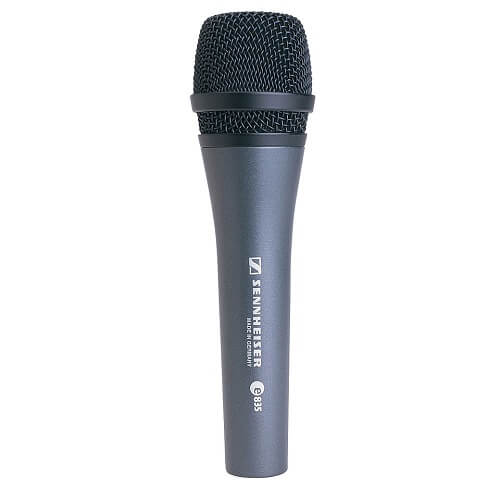
- Impedance: 350 Ohm
- Without switch
- Dimensions: Ø 48 x 180 mm
- Weight: 330 g
| For EU Customers | |||
|---|---|---|---|
Sennheiser E835 |
4. Telefunken M80 Black
Even though it’s competing in a crowded market filled with many great dynamic mics, the M80 stands out—often reaching a level usually reserved for much more expensive microphones. While it’s not as cheap as an SM58, what you get in return is a noticeably better microphone overall.
With its exceptional off-axis rejection, impressively wide frequency range, clear and expressive vocals, and a rugged build designed to last for years, the Telefunken M80 is a fantastic microphone that combines excellent performance, versatility, and value into one outstanding package.
The M80 is marketed as a top-tier vocal microphone, aiming to surpass the ‘industry standard’ (in other words, the SM58) on every front. From our experience with the mic, it delivers on that promise. The frequency response is wide and offers enough presence to help vocals cut through a mix without sounding muddy.
While most live dynamic microphones tend to lack mid-range clarity, the M80 produces vocals that sound clean, accurate, and polished. It doesn’t have a strong proximity effect, but the M80 still delivers a rich, full-bodied sound with plenty of low-end response. Adding a bit of compression and some EQ made the M80 sound even better—on par with dynamic mics that cost hundreds more.
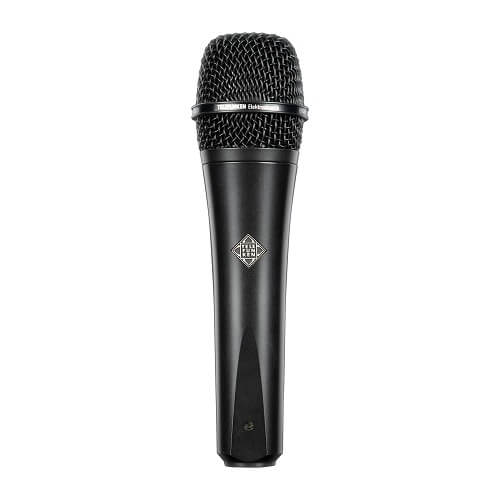
- Maximum sound pressure: 135 dB
- Length: 184 mm
- Diameter: 48 mm
- Weight: 387 g
| For EU Customers | |||
|---|---|---|---|
Telefunken M80 Black |
5. Sennheiser MD421-II
The Sennheiser MD421 II is a dynamic microphone built to handle extremely loud sound sources—so much so that Sennheiser doesn’t even list the mic’s maximum SPL. They only mention that issues might arise around 160dB, but that’s a sound level you’ll rarely (if ever) encounter in real-world situations.
Although this mic is marketed mainly for drums, many people have found it works exceptionally well for vocals—especially for loud male singers in rock, rap, metal, and similar genres. Some even say the MD421 is the one microphone they’d choose if they could only have one to use.
“Industry standard” and “indestructible” are two big phrases that come up often from users who are seriously impressed with this mic. Experts can’t recommend the Sennheiser MD421 enough, calling it one of the most reliable and versatile workhorse microphones available today.
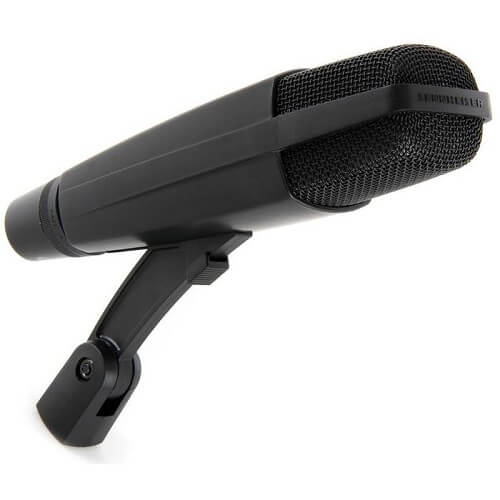
- Frequency response: 30-17000 Hz
- Nominal impedance: 200 Ohm
- Dimensions: 215 x 46 x 49 mm
- Weight: approx 385 g
| For US Customers | For EU Customers | |||
|---|---|---|---|---|
Sennheiser MD421-II |
6. Shure MV 7 Silver
The Shure MV7 is an easy-to-use microphone that skips traditional buttons and switches. Instead, Shure gave it a touch panel with a row of LED lights to show the gain level. This panel also includes a mic mute toggle for quick adjustments.
On the back of the microphone, you’ll find XLR, micro USB, and headphone jack outputs. While it shares some features with the more premium SM7B—like adjustable frequency responses—with the MV7, you need to download the ShurePlus MOTIV app to access these options, whereas the SM7B has them as built-in hardware switches.
The touch panel looks modern, though it feels a bit out of place on this classic microphone design. We found it less effective than traditional knobs, dials, and switches. Making volume changes while speaking can be difficult; it requires two hands—one to hold the mic and the other to slide across the touch panel.
While this process isn’t difficult, the main problem is that touching the mic can add unwanted noise to your recording. If you need to adjust your gain, make sure the microphone is steady before you start recording again.
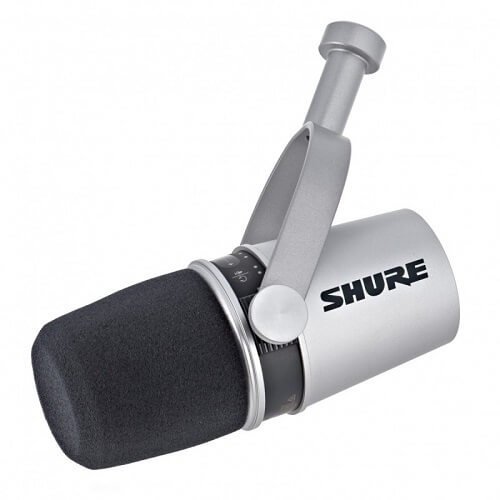
- Frequency response: 50 – 16,000 Hz
- Microphone dimensions (X x L): 66.5 x 53.6 mm
- Weight: 550 g
| For US Customers | For EU Customers | |||
|---|---|---|---|---|
Shure MV 7 Silver |
7. Audix OM6
The OM6 is a dynamic vocal microphone designed for live performances, studio work, and broadcasting. It features a wide frequency response, delivers a full-bodied and articulate sound, resists feedback, and can handle extremely high sound pressure levels—over 144 dB—without distortion.
The OM6 offers a well-controlled hyper-cardioid polar pattern, which helps isolate vocals. With qualities similar to a condenser microphone, it provides a clean, rising response between 2 kHz and 10 kHz, along with a flat, fully extended bass response from 60 Hz to 1 kHz.
Combined with its specially tailored mid-range, the OM6 is an excellent choice for both broadcast and live recording. It is designed, assembled, and tested by Audix in the USA.
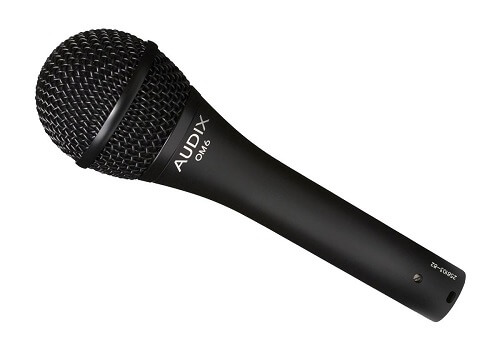
- Frequency response 40 Hz – 19 kHz
- Maximum SPL: 144dB
- Length 176 mm
- Weight 307 g
| For US Customers | For EU Customers | |||
|---|---|---|---|---|
Audix OM6 |
8. Shure Beta 57 A
The Shure Beta 57A Microphone builds on the popular Beta 57 design to enhance warmth and presence. Many lead performers use the Beta 57A to capture drums, guitar amps, brass, woodwinds, and vocals.
A superb super-cardioid pattern delivers excellent gain-before-feedback across its frequency range. The hardened grille is built for extra durability and designed for close-miking to boost the low-frequency proximity effect. A high signal-to-noise ratio is achieved thanks to its neodymium magnet construction, while the internal shock mount reduces handling noise. The microphone features a frequency response from 50Hz to 16kHz.
The Beta 57A maintains a true super-cardioid pattern throughout its entire frequency range, ensuring high gain before feedback, maximum isolation from other sound sources, and minimal off-axis tone coloration.
Its neodymium magnet delivers a high signal-to-noise ratio, and the newly designed, hardened metal mesh grille lets you take full advantage of the proximity effect. The grille is also built to withstand heavy use and abuse. Exceptionally versatile, the Beta 57A comes with an advanced pneumatic shock mount for superior performance.
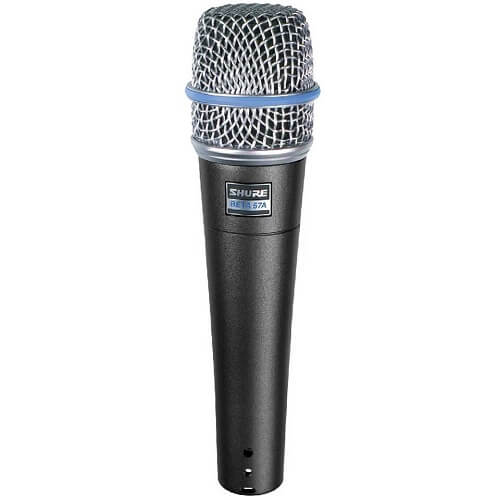
- Frequency range: 50 – 16,000 Hz
- Output impedance: 150 Ohm
- Dimensions (L x Ø): 160 x 43 mm
- Weight: 275 g
| For US Customers | For EU Customers | |||
|---|---|---|---|---|
Shure Beta 57 A |
9. beyerdynamic M201TG
As a member of the M series, the M 201 TG delivers a pure and accurate sound that sets it apart from other dynamic microphones. It captures signals with exceptional clarity and detail. These qualities have led many people to choose the M 201 TG over condenser microphones, allowing them to enjoy the unique strengths of this dynamic option.
The M 201 TG stands out in the microphone market, thanks to its distinctive combination of features and the high-quality workmanship that beyerdynamic is known for.
Whether in the studio or on stage, the precise sound reproduction made possible by the M 201 TG’s exceptionally linear frequency response ensures a clear and accurate signal. This helps the microphone stand out in the mix and opens up a world of possibilities for post-production.
Its compact design also makes the M 201 TG easy to position, giving artists the flexibility and support they need to achieve the perfect sound.
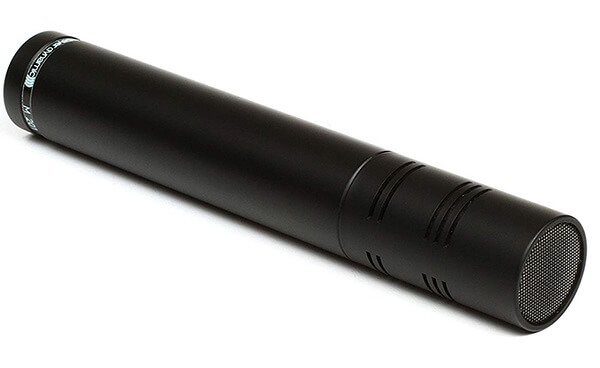
- Frequency range: 40 – 18,000 Hz
- Impedance: 200 Ω
- Length: 160 mm
- Weight: 220 g
| For US Customers | For EU Customers | |||
|---|---|---|---|---|
beyerdynamic M201TG |
10. AKG D-7S
The AKG D7S reference dynamic vocal microphone delivers the refined and open sound of a condenser capsule, combined with the powerful resonance of a dynamic microphone. Its patented dual-layer Varimotion diaphragm vibrates freely, resulting in a crisp and clear sound.
Unique laminated materials dampen excessive resonance peaks in the frequency response. Along with its tight super-cardioid polar pattern, this allows the D7 to achieve excellent high gain before feedback. The microphone also features an on/off switch.
The mechano-pneumatic capsule suspension and built-in high-pass filter effectively eliminate handling noise. A precision steel dust filter provides consistent protection for the diaphragm, ensuring extra-long life.
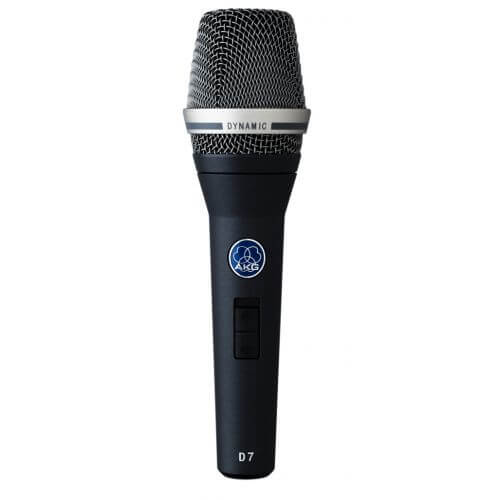
- Sensitivity: 156 dB max. SPL
- Impedance: 600 Ohm
- Laminate Varimotion membrane
- Weight: 340 g
| For EU Customers | |||
|---|---|---|---|
AKG D-7S |
|
Conclusion
You can’t go wrong with any of these microphones if you’re looking for something versatile for your studio or live performances. They’re durable and will give you exactly what you need—a microphone that can handle a variety of situations, depending on your requirements.
If you think we missed an important dynamic microphone that should be mentioned in this article, please let us know in the comments section. We’ll do our best to include it in one of our future blog posts about microphones.

